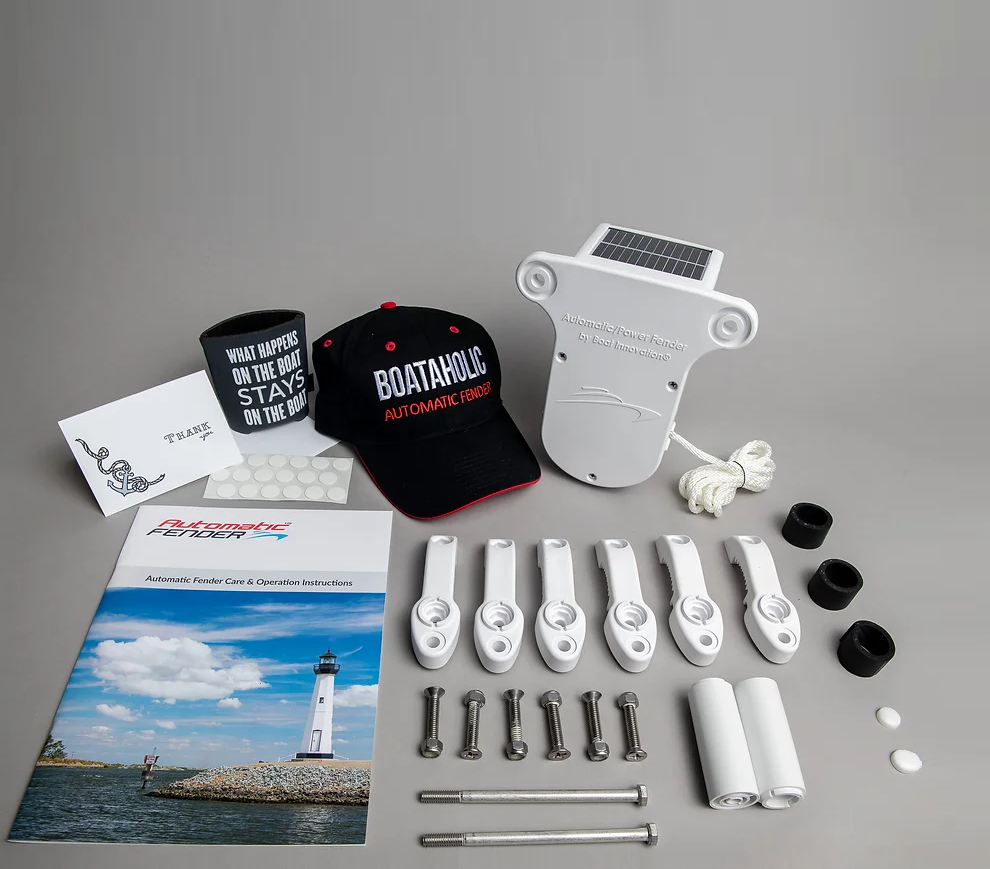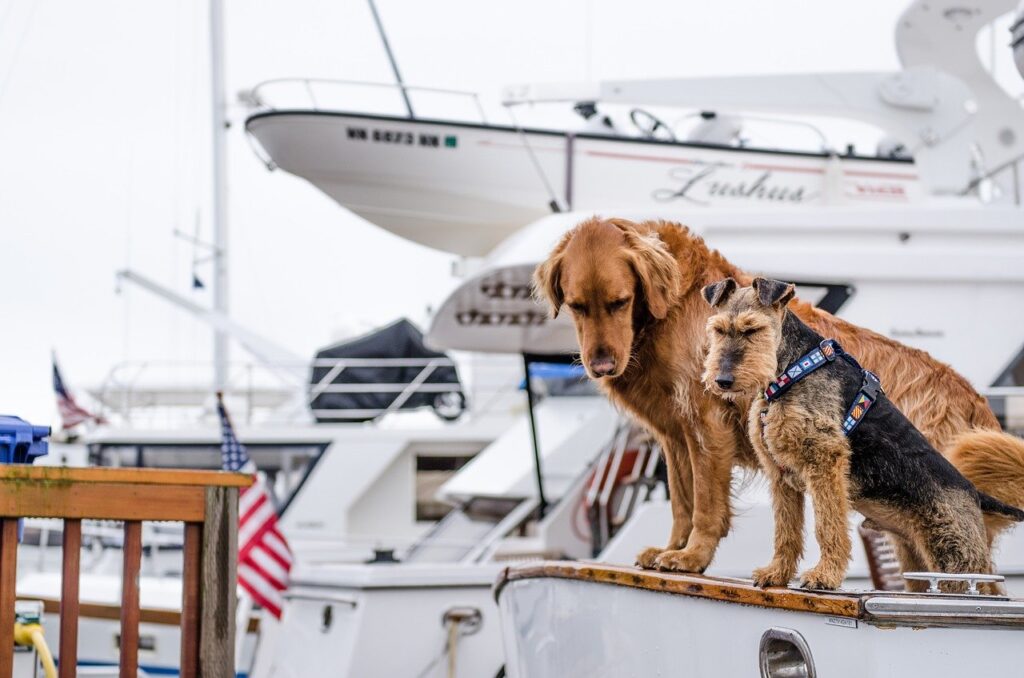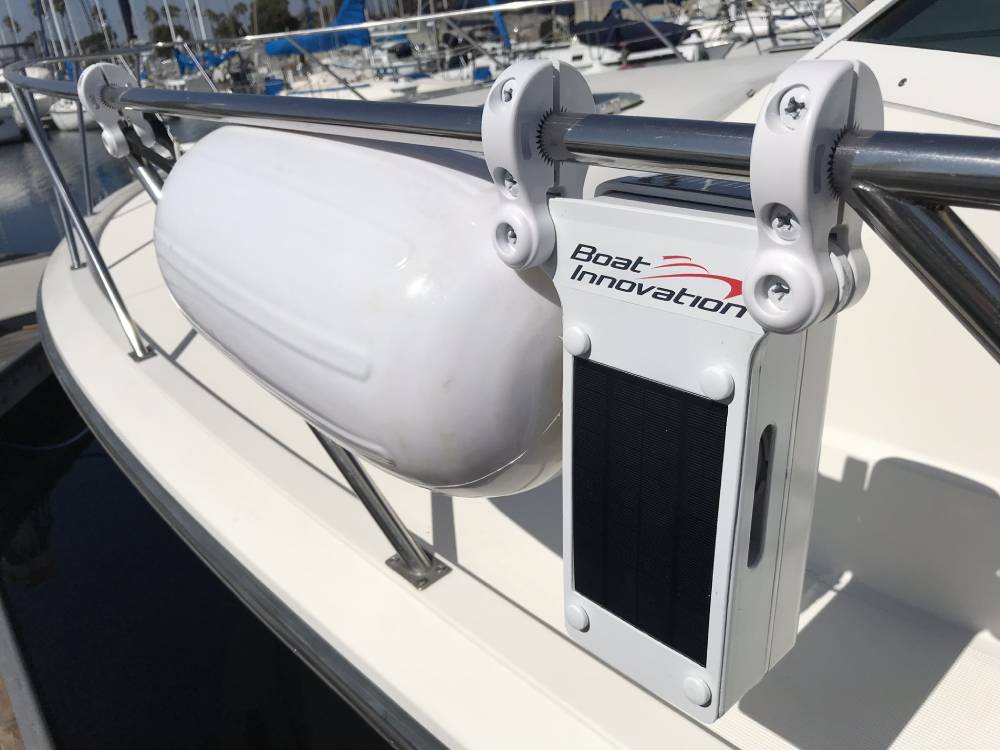Embracing Fender Technologies to Enhance Boating Experience

Boating has always been a blend of tradition, skill, and adventure. However, as technology continues to advance, it is worth it for boaters to embrace the latest innovations to enhance their yachting experience. We will explore the rise of fender technologies, and examine the role of a Fender System in facilitating safer, more effortless procedures for docking and undocking boats, thereby minimising the risk of unwanted impact damage to the boat. Some experienced boaters may say “I have been on boats long enough. We do things the way we always have, using our hands, our eyes and our instinct – that is what real boating is to me. Not some fancy technologies.” Long-time boaters often are not too quick to adopt new technology because they have years of practice and trust in the old-school ways of doing things. They reckon that sticking to what they know keeps the real spirit of boating alive, even though the technology could make their boating experience safer and easier. New Technology Broadens the Horizon in Boating Similar to the emergence of digital photography in the 1990s, there was initial resistance from professional photographers as they were deeply rooted in their established analogue techniques, and perceived this technological shift as a potential threat to the art. However, as time passed, they began to realise that digital cameras not only preserved the fundamental principles of photography but also expanded its scope, adding diversity and excitement to the craft while reducing cost. This flexibility ignited a resurgence of interest in the art, enabling professionals and amateurs to experiment with new styles without losing sight of basic photography theories and skills. Similarly, the Fender System enhances the pleasure of boating by facilitating safe docking and undocking procedures, while boaters continue to refine and utilise their boat manoeuvring skills. This increased safety measure reduces potential damage to the boat and relieves boaters’ stress during the process, hence enhancing the overall experience on the water. How Does It Help? We probably agree that docking a boat is quite challenging, as boat fenders are set to mitigate the unavoidable knocks and scrapes that might cause during docking and undocking. Naturally, it is always an unexpected gust of wind, a sudden turbulence on the sea surface, or an oversight that makes boat arrival and departure at a berth risky and even dangerous. Despite its usefulness, boat fenders come with complications for boaters, as they are bulky to store and inconvenient to use, not to mention the challenges of having a crew to position them correctly at the bow, especially in turbulent waters. The situation can be even more problematic for those who have limited mobility, or those who love sailing solo – the necessity to abandon the helm to deploy or lift fenders during the docking and undocking process is not only risky, but it could be an unwise course of action. The Fender System addresses all these challenges. Using smart sensing technology and remote monitoring & control, the system allows boaters to control boat fenders remotely from the cockpit when docking or undocking the boat, significantly reducing stress and effort, especially in dangerous situations. The system is notably easy to use. It has been designed for boaters to manage it from anywhere on the boat using a smartphone or tablet and a simple app. Powered by batteries that last a long time, the system comes with a waterproof casing so boaters do not have to worry about regular replacements. The installation of the Fender System is considerably simple by just screwing it on the boat rails using a suitable screwdriver. The Fender System is not just about making docking and undocking safer and more efficient, but also about keeping things neat. It also serves as a practical tool for novice boaters, allowing them to hone their sailing skills, while simultaneously enjoying sailing. The integration of traditional skills and the Fender System is paramount to enhancing the yachting experience. By embracing innovations, boaters can preserve their connection to the rich heritage of seamanship while enjoying the safety and convenience. Learn more about the latest version of our Fender System. Feel free to contact us for placing your order.
Fire Safety on Boats

Safety On Board You’ve probably see pictures or even videos of a boat on fire. It certainly is not a pretty sight and one that quite correctly puts fear – or at least caution – into your heart. There is no doubt that the best approach requires a combination of prevention, detection and first line firefighting. Let’s be clear – if a fibreglass boat is seriously on-fire, then ‘abandon ship’ might be your only option. Never put yourself or others at risk Prevention requires a common-sense but methodical approach. Carry out a Fire Risk Assessment – identify what could go wrong; and what you can do to prevent a fire from ever starting. For example, an absolute no smoking policy is the best approach. Also, be very careful of those gas lighters that are used to light a gas ring – they can still have a flame or be hot when placed on a surface or in a drawer, possibly starting a fire. Detection is quite straightforward. There are many low-cost smoke and fire alarms on the market. (Carbon monoxide alarms are also very important.) They are all easy to fit. We have used industrial strength ‘Velcro’ to affix alarms without drilling walls or ceilings. They seem to hold even in choppy seas. Placement is of course important. You need to have one in every ‘room’ in the boat. Don’t assume that fires only start in the galley. First-line firefighting is more complex. Some basic rules apply. Obviously, a pan-pan or mayday (or dial 999 if VHF is not available) is required. To safely extinguish a fire you need to get to it very quickly. It follows, therefore, that you need an extinguisher (even if just a small one) in easy reach in every room that is likely to be occupied (cabins, galley, saloon etc.). Also, always leave yourself an escape route. One risk occurs if you sleep in a forward berth. If a fire starts in the galley, then this may block a possible means of escape. However, opening the forward escape hatch above the berth also has a risk – of encouraging the fire by allowing a draft of air to fan the flames. This reinforces the need to have an extinguisher close to hand. The galley should of course also have a fire blanket. Be sure you know how to use it correctly to avoid burns to your hands. There is, however, one serious, well recognised problem with the common powder type of fire extinguisher. If they have to be used, they make a truly horrendous mess. Unfortunately, they get into all the soft furnishings, they corrode electric and electronic connections, they are potentially toxic if breathed in, they act as a laxative (!!), they can be destructive of engines. The mess can only be safely cleared up using personal protective gear. Go Earth researched this problem and found two ranges of extinguishers (Firetool for inside spaces and Blazecut for the engine bay) that do not suffer from these issues.
You Old Seadog

Dogs and Boating Wikipedia reliably informs us that ‘seadog’ can refer either to a sailor or a dog. Well, it occurred to me that many of us have actual dogs, of all breeds, shapes and sizes that come out on our boats, so a few words about them might be helpful. Some dogs do genuinely love being out on a boat and take to it like a fi sh to water (if that’s not mixing metaphors). Others are less sure or even nervous about the whole adventure. This article is intended to help dog owners acclimatise their dog to the boating life. Let’s start at the beginning. Walkies Most dogs are happy to go to a marina – even they can sense the excitement. However, some dogs don’t like walking along the pontoons or up or down (depending on the tide) a linking bridge. This is not a good start – before you have even got to the boat. I have seen owners trying to pull their small – but apparently quite powerful – dog by his lead along a pontoon. Even the offering of a tempting morsel of chicken would not get the dog to move. Whilst amusing for onlookers (almost as entertaining as watching someone trying to berth in nice gusty conditions . . .), it can present a real problem. Often the issue can be quite simple – the dog is uncomfortable with the gaps between the wood on the pontoon, or the patterns of holes in plastic pontoons. Their claws can get (painfully) caught, especially in plastic ones. Solution? Take it slow and steady. The first time you take your dog to a marina, have it walk just a few steps, and then get back on ‘dry land’. Reward its behaviour. Then try a little bit of a longer walk along the pontoon. Again, use positive reinforcement so that the dog enjoys the whole experience. Smelly Toys and Beds OK – let’s assume that you have now got the dog happily on your boat. He will be more comfortable if he has some of his toys and his usual bed on the boat. Don’t make the mistake of buying him a new bed for the boat – use his existing one with its existing smell! Yes, even if the smell is a bit strong – hopefully the sea air will take some of the smell away. Your Dogs First Boat Ride Get the dog used to the boat before you venture out on the water with him. Once he is happy with the boat, then he is far more likely to be happy going out on the water. Be gentle with your dog on his first trip out. The noise, the ‘strange’ rocking of a boat can all be very worrying for some dogs. We suggest that your first ride out with your dog should be on a very calm day, in a very relaxed manner. Act naturally, and give your dog a treat or two (or three . . .) What might work with some dogs, is to take them out in a small dinghy / RIB, so that he can put his paws on the tubes and look around the marina. We know that our own dog loves this. Note that dogs can actually get seasick, so watch out for signs of this. If the noise of a boats engines seems to be worrying your dog, then just slow down to a speed and noise that he is comfortable with. Over time, you can get him used to faster speeds and noisier engines! Also, ensure that your dog is hydrated and has enough water to drink. Safety First The RNLI quite correctly say of lifejackets “useless unless worn”. The same applies to dogs. Dogs should have a life-jacket of the correct size, and must wear it (despite their objections). Some dogs have a habit of jumping into water at the fi rst chance they get. Labradors are real experts at this (and also at drenching bystanders when they get out of the water and shake their fur). Note that dog life jackets are really just floatation devices – they don’t automatically inflate if (or when!) your dog jumps in the water. What they should have is a grab handle on the back so that you can safely (and unceremoniously) lift your dog out of the water. If you really want to embarrass your dog, lift him out with a boathook under the grab handle!! Which Breed? Different breeds react differently to the water. Naturally nervous dogs may not like their time on the boat, being concerned about strange noises and motion. Other breeds will love it. If you are thinking of getting a dog to go with your boating, then there is a useful article on the suitability of a few breeds. Please remember though, that a dog is for life and has to fit in with all aspects of your life. Success Treat your dog right, and train him well, and he will come to regard your boat as part of his home – even to the extent of guarding it and barking at strangers. He will be happy on your boat and look forward to his boating adventures with you. However, you need to train him not to bark loudly in the middle of the night when he is guarding your boat against real or imaginary noises! Responsible Dog Ownership Of course, owning a dog brings responsibilities as well. The following tips may help: Take ‘your’ dogs for plenty of walkies – but ALWAYS on a lead in the marina. Consistently, encourage your dog to wait until you are in a dog-walking area before relieving himself. If ever there is an accident, please clear it up immediately. I suggest always having a few ‘poop bags’ with you. If there are some doggie waste bins in the marina, please do use them. If there is any residue left, please wash it away thoroughly with the nearest water tap. If your children take the dog for
The Joy of Berthing

Innovative devices that can aid berthing We all know it. Berthing a boat can sometimes be remarkably straightforward, and at other times can be a time of stress, challenge, shouting, misunderstandings, slight (and possibly expensive) bumps and even the odd (and definitely very expensive) trip to the divorce lawyer! What can you do to reduce the stress? Obviously practice and training are important. So is mentally rehearsing what you are going to do, taking into account wind, current, the windage, momentum and general characteristics of your boat… and of your crew. Fortunately, nowadays, just like parking a car, there are some systems that can help you. For wind direction, simply look at the top of the mast of any sailing yacht. The simple arrow (the masthead fl y) will tell you the direction the wind is coming from. Look at a berthed boat so you get the true wind direction. The wind direction can veer, back or can be steady. Again, look at the arrow. To check the direction and strength of the current, and whether you are on a falling or rising tide, know the area and look at the water. Reading the water is a learned (and easy-to-learn) skill. Tidal maps are generally of limited relevance once you are in the marina itself. The windage of your boat and the nature of your keel will determine the extent to which the wind and current will affect you. If you are new to the boat, spend a few minutes outside the marina, just drifting. See how and which way the boat moves. Various systems make close quarter manoeuvring much easier. Systems like twin engines, bow thrusters and stern thruster have been around for some time. Slightly more recent innovations such as pod systems (like Volvo Penta’s IPS range, the MerCruiser Cummins Zeus, and the ZF Marine 4000 systems) coupled with joystick control aid the control of your boat. The problem with all these systems is that they are either impossible or very expensive to retro-fit. However, there is one activity that until now has always led to the crew being very busy and all too often trying to be in all parts of the boat at the same time – and that is managing the fenders. This applies especially if you are short-handed – such as being single-handed or just a skipper and his/her partner. The scenario is all too familiar. The skipper shouting orders and the partner/crew running from one end of the boat to another deploying fenders, trying to fend off, as well as keeping a lookout. All this is happening at a busy time. Even when you are out on the water you need to find a way to safely stow the bulky fenders so that they don’t cause any damage by bouncing around. Fortunately, a new solution has been designed and launched – the Automatic Fender system. The concept is marvellous in its simplicity. The foam fenders are stored in a special basket. When you approach the marina, the inbuilt GPS knows where you are. The basket then swings out and the motor automatically lowers the fenders to the correct height. Once you have set the height for the marinas you visit, the system remembers them. If you prefer, or are entering a new marina, you can set the height via, for example, a tablet (using the in-built Bluetooth). What does the crew have to do? Sit back and slowly sip the gin and tonic. Or beer. That’s it. It really is as simple as that. How complex are they to initially fit? Again, simple – about 20 minutes per basket. There is not even any wiring to fit. The motors are fully driven by solar cells at the top of the unit. The foam fenders are better at retaining their shape, as they cannot deflate or get punctured. For the larger, crewed, yachts and super-yachts, the installation of this system may even save money on crew costs, as fewer deck-hands may be required. They can even be integrated into the yachts systems; as well as adding to the all-important bragging rights! Go Earth is the international (apart from the USA) distributor for these products. We believe this product will become as essential as, say, a bow thruster in aiding the berthing process. It helps make berthing painless!
